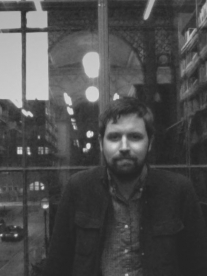Like glistening sculptures, Mads Emil Dreyer’s music exists as much in its own sure forms as in the listener’s individual response to them. His music creates conscious hinterlands in which detailed, focused sounds can be observed, like an artwork unfolding in time. His versatility and flexibility have made him a favourite on Copenhagen’s new music scene and far beyond it.
As interested in knobs and buttons as violins and flutes, Mads Emil Dreyer often sets up a dialogue between electroacoustic and acoustic entities. His music might use electronics to blur tonal harmonies, mimic acoustic sounds or place a fog around regimented instrumental robotics. Sometimes, electronics are deployed to counterbalance music with vision, presenting sound and image as two sides of the same process.
Lightness and brightness, beauty and poetry, are all over Dreyer’s works. A characteristic method is to use minimal themes gently repeated or painstakingly metamorphosed. Radiant explorations of timbre might be used to distract from a neat, diatonic harmonic process. Shapely songs or lullabies might be stretched over deep electroacoustic throbbing or long drones.
Mads Emil Dreyer’s music has been credited in the press for its humanity, beauty, technical discipline and aesthetic focus. He has written for, among others, the Danish National Symphony Orchestra, Ensemble Adapter, Athelas Sinfoniettta and Neue Vocalsolisten and is a founding member and house composer of the contemporary music group NEKO3.
Mads Emil Dreyer studied composition at advanced postgraduate level at the Royal Danish Academy of Music, where his teachers included Hans Abrahamsen, Bent Sørensen and Niels Rosing-Schow. He also read humanities at the University of Copenhagen and the University of California, Berkeley. In 2019, he received the Carl Nielsen and Anne-Marie Carl Nielsen Talent Prize.



